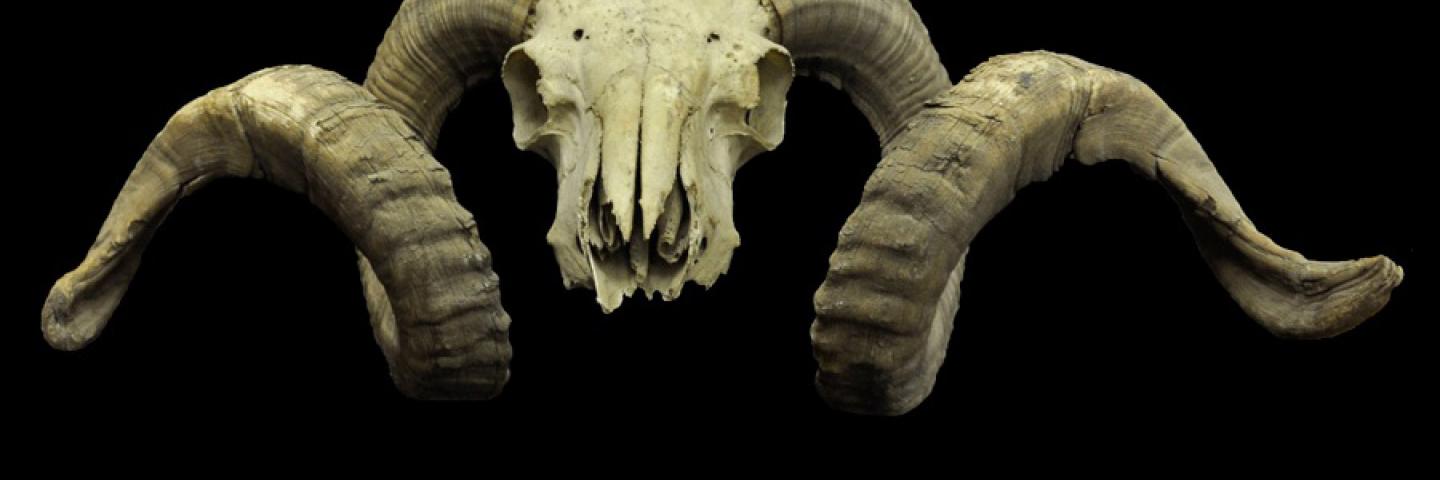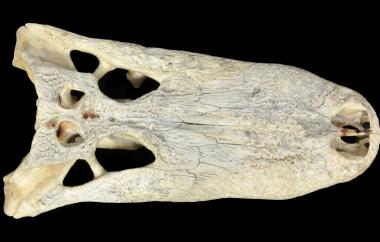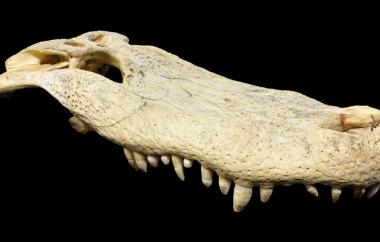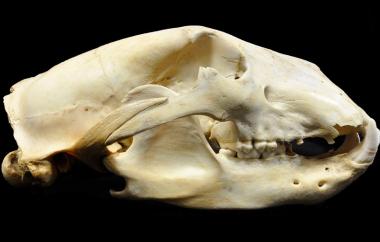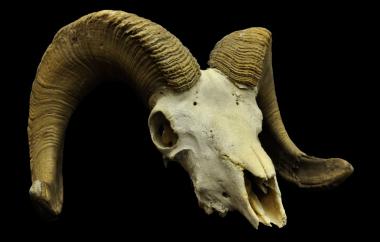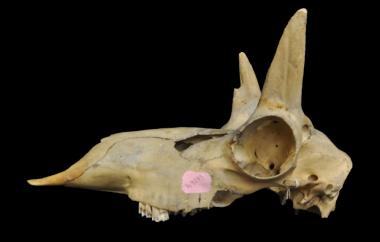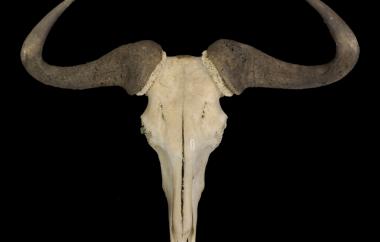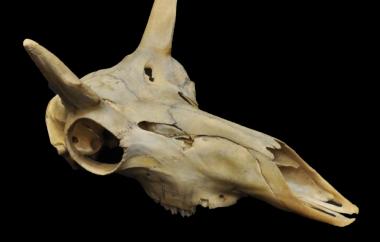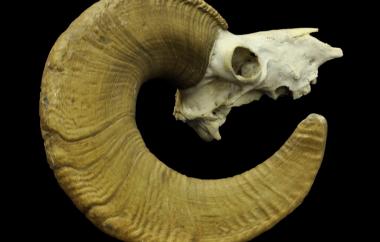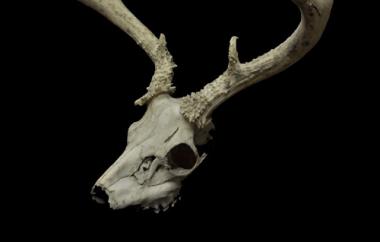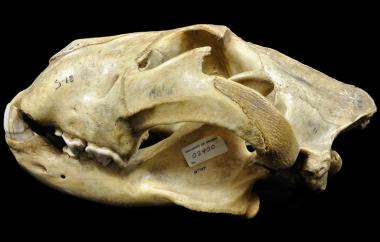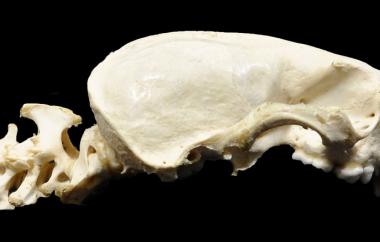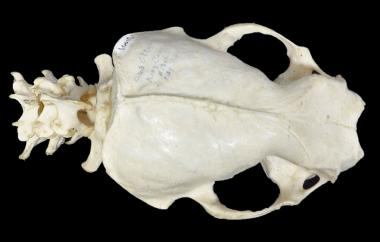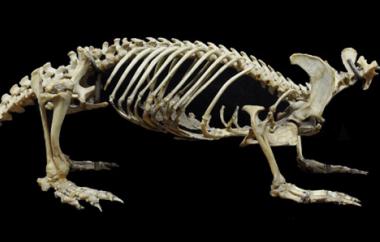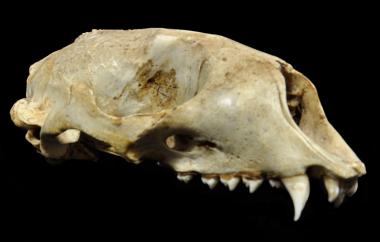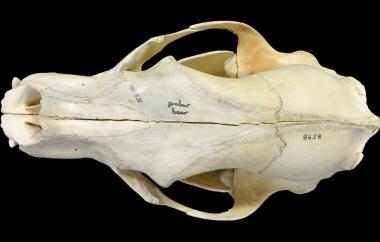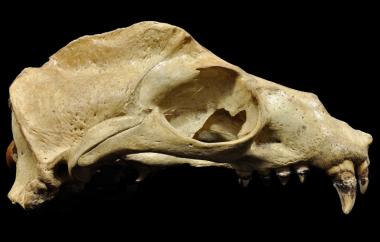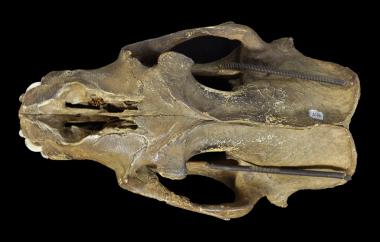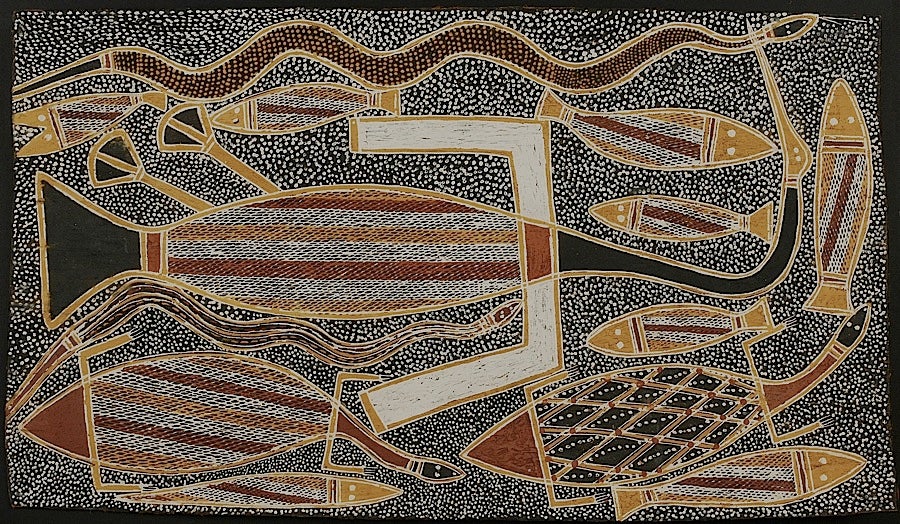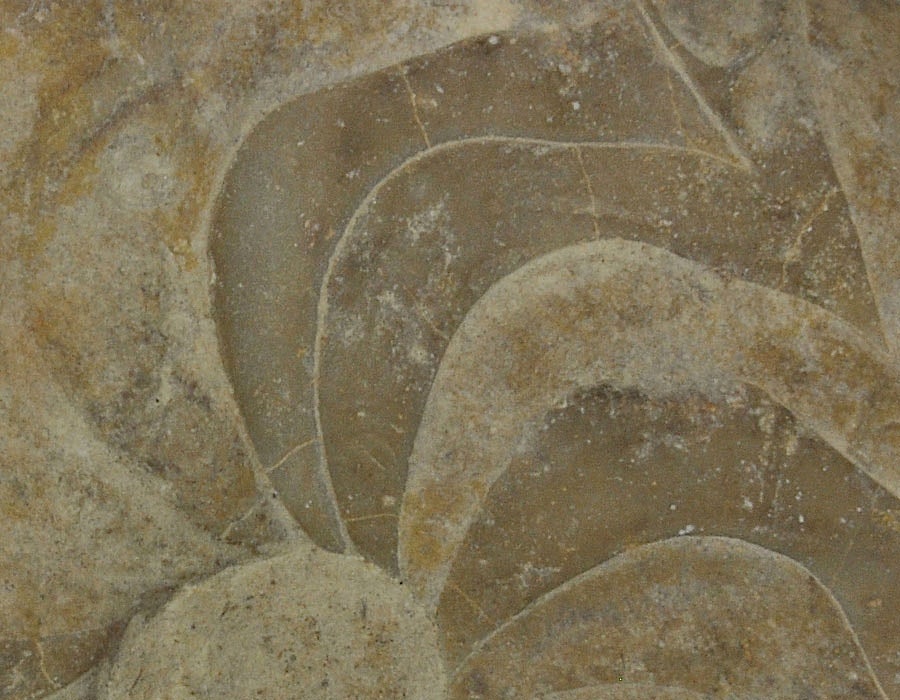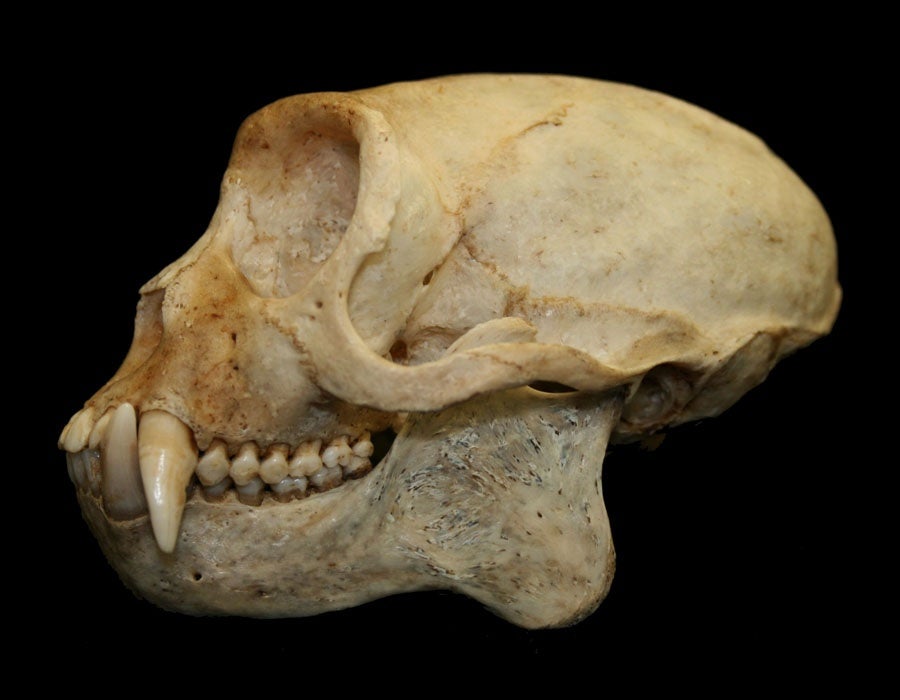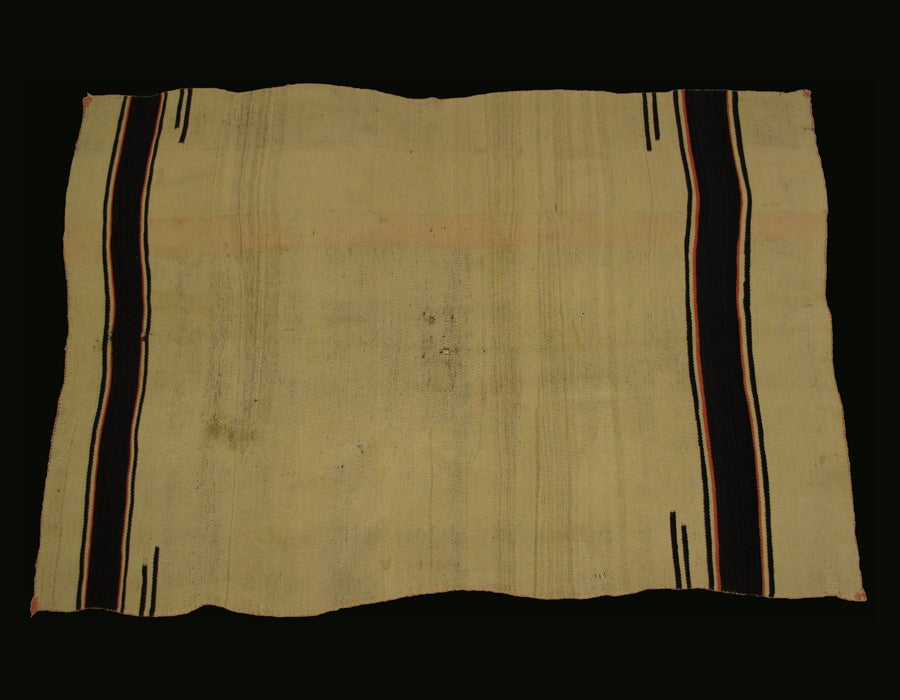In this gallery, we highlight a few of the vertebrate skulls in the museum's comparative biological collections. The vertebrate skull has changed significantly over time, but alligators like the one pictured here are “living fossils” that have remained relatively unchanged from their first forms. The other skulls in this gallery are mammals. Mammals derive from a branch that split from the ancestors of reptiles and birds in the Permian, over 250 million years ago. All groups of mammals have two tiny inner-ear bones, the malleus and incus (hammer and anvil). These two bones evolved from bones found in the jaws of reptiles and birds, but are now used for hearing in mammals. The platypus is a monotreme, a mammal that still lays eggs, just as our Permian ancestors did. The remainder of the mammals in the gallery are placentals, growing their babies inside the mother.
The animals with horns and antlers in this gallery are ruminant artiodactyls, the group of cloven-hoofed animals that chew cud to aid their digestion. Ruminants include four well-known groups with headgear: bovids (cows, goats, antelope), cervids (deer, moose, elk), antilocaprids (pronghorn antelope), and giraffids (giraffe and okapi). Edward Davis is currently studying the origin of ruminant headgear. Each of the four groups has its own distinct kind of headgear: Bovids have true horns, made of bone horncores covered by skin and 'horn' made of keratin, the same protein as hair, hooves, and fingernails. Pronghorns have a horn that has evolved independently from bovid horns, with an inner bone horncore and an outer layer which they shed and regrow each year. Deer have antlers, which are dead bone that is shed and regrown each year. Deer have stem cells in the knobs (pedicles) at the base of their antlers and from them grow the new antlers each year. Images © Museum of Natural and Cultural History.
Alligator
Alligator mississippiensis
dorsal view
Alligator
Alligator mississippiensis
right lateral view
Black bear
Ursus americanus
Blacktail deer
Odocoileus hemionus
damaged antlers
Bighorn sheep
Ovis canadensis
right anterio-lateral view
Pronghorn
Antilocapra americana
left lateral view
Bighorn sheep
Ovis canadensis
anterior view of different specimen
Gnu
Connochaetes sp.
anterior view
Cow
Bos taurus
Right anterio-lateral view
Pronghorn
Antilocapra americana
right anterio-lateral view
Bighorn sheep
Ovis canadensis
right lateral view
Blacktail deer
Odocoileus hemionus
African lion
Panthera leo
Sea otter
Enhydra lutris
right lateral view
Sea otter
Enhydra lutris
dorsal view
Platypus
Oncorhinchus anatinus
Harbor seal
Phoca vitulina
right lateral view
Polar bear
Ursus maritimus
dorsal view
Seal lion male
Zalophus californianus
right lateral view
